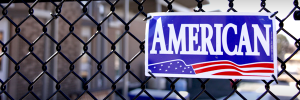Temporary Panel Fence System
After a late evening storm, I was driving home and noticed a newly installed temporary fence panel system that had blown over into the street. I thought to myself that I hope this contractor chooses to have the fence company maintain the panel system. What a mess!
Every major storm that sweeps through your community will leave some damaged fencing. Temporary fencing is always hit hard. Because temporary fencing is just that, “temporary;” it is not set in concrete footings or permanently fixed. Temporary fence panel systems are often anchored with sandbags placed over the temporary fence stands. Typically, two sixty-pound sandbags every 12′. These systems rarely can withstand high winds or shear force winds.
As your Madison fence contractor, we hope to keep the community informed. So, what should a contractor do to better maintain his temporary fence system?
- Don’t place large signage or screening on the fence if it was not originally intended to support this material. Temporary fence panel systems with sandbags cannot support large signage. Where signage is to be installed, install fence posts into the ground or double-up on your sandbags.
- Ask the temporary fence contractor to maintain the system while installing. This may cost a few dollars more but more than worth it if your system is blown down one evening after a big storm.
- Quickly notify the temporary fence contractor about any damage or down materials. The contractor may charge a small fee for simply standing up the materials. This is far less expensive than replacing panels and fabric that have been run-over or bent because this material was left down on the ground.
- Keep an eye on your sandbags. It is not uncommon that over time your sandbags may slide off the stands or bust open. Sandbags are very inexpensive. Many contractors request the temporary fence contractor to leave a handful of sandbags for quick repairs that they can do themselves.
- Be mindful of your installation. If your temporary fence system crosses through an open field, at the crest of a hill, or between two tall buildings; you can reasonably assume this system will receive a lot of wind. Ask your contractor to drive the posts if possible or add additional sandbags.

